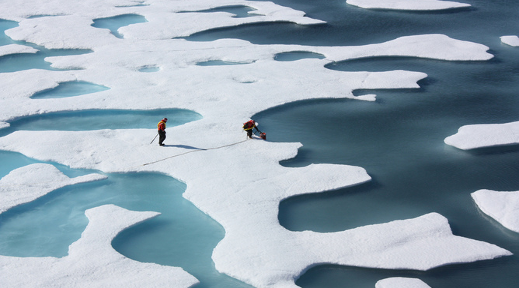As the annual September sea ice minimum in the Arctic approaches, the usual questions arise about whether this year will set a new record for the extent or volume of ice left at the end of the summer. Although there was a new winter record low in 2017 it is looking unlikely that the summer will also set a record for extent, but there is still a month to go.
We understand that sea ice melt is erratic – we should not expect new records every year, but the overall trend is towards less and less ice. But, what about looking further ahead? And, can we understand sea ice variations during the historical period? Continue reading Linking global temperature and Arctic sea ice changes
